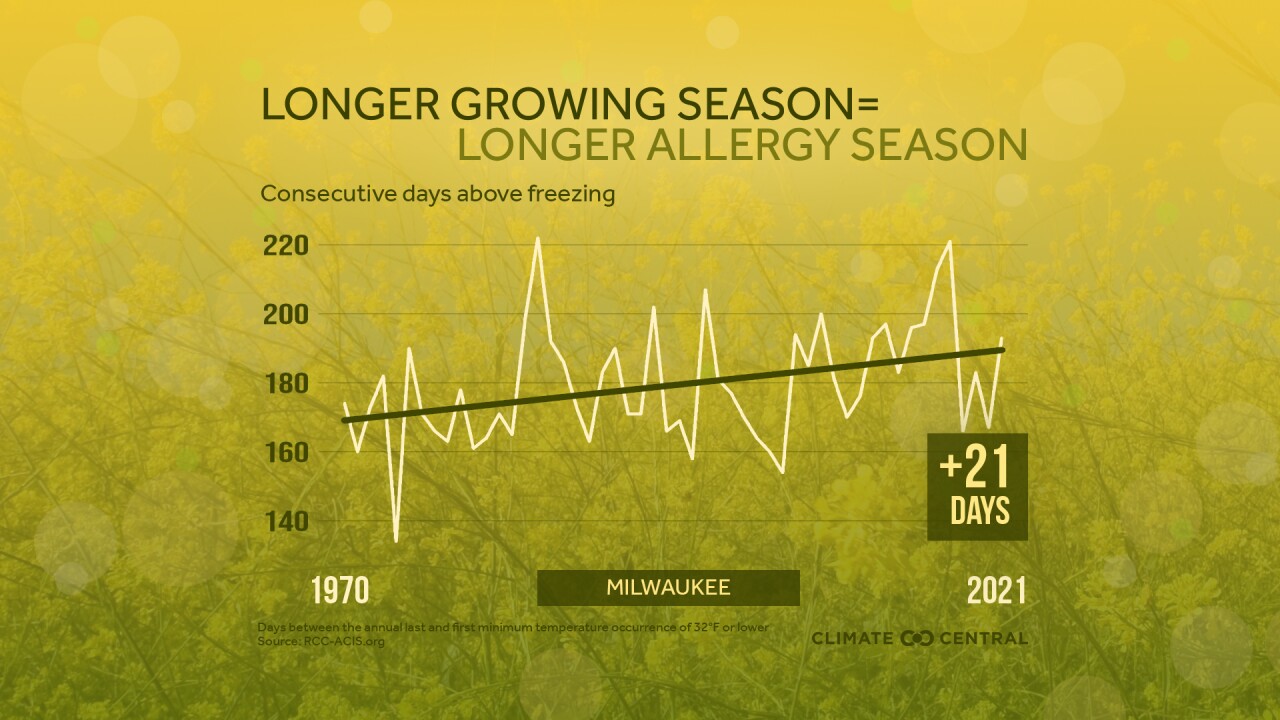MILWAUKEE — Have your allergies been acting up over the last few weeks? Certain pollen levels have been on the rise, bringing back the return of the pollen report on TMJ4 newscasts.

Although trees are still bare, and the grass is still rather brown, there is pollen in the air. How is this so? It has to do with the weather!
When we see a strong southerly wind, that can carry in pollen in from southern states where flora is in bloom. Tracing has shown that in spring, pollen can be transported here from places as far away as Georgia and South Carolina! But early in the spring, when winds turn back out of the north or northwest, pollen levels quickly drop back down. That's because plants are not yet blooming in areas to our north and west. Rainy weather will also impact pollen levels; on rainy days or during rainy stretches, pollen is washed out of the air, bringing levels down.
According to Dr. Steven, MD, PhD, of the Allergy, Asthma & Sinus Center, S.C. in Greenfield, Wisconsin, the pollen count rose to over 500 for the first time on Monday, April 11. This lines up as a near average date to reach the 500-level, the earliest on record being March 14, 2012, the latest April 27 of 2009.
Looking back at years of data, Dr. Steven discovered that tree pollen season in our area has increased in length. Twenty-five years ago, the tree pollen season was 69 days in length. In the last few years that number is around 88 days, a nearly three-week increase! And on top of that, the maximum pollen count has increased as well.

Climate Central, an organization that researches climate change, found that the growing season has increased over the last 50 years, leading to a longer allergy season.

In Milwaukee, the stretch of consecutive days above freezing lengthened by 21 days from 1970 to 2021. Climate Central found the growing season has lengthened for 172 of 203 locations analyzed across the country. In addition, the presence of higher CO2 levels can boost plant growth, leading to more pollen production for certain plants.
Different types of plants bloom throughout the warm season in our area, leading to varied levels of allergens. Watch for the allergy report during our newscasts to see the most recent measurements in Southeast Wisconsin.


